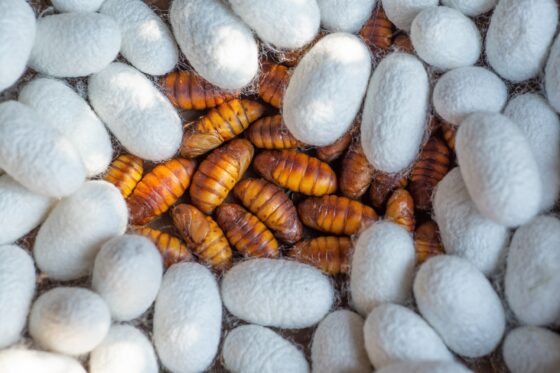
American engineers may have found the solution to replace the presence of microplastics in paint, food and cosmetics. And the answer lies in a textile material that everyone knows: silk.
In our cosmetics, in our clothes, on our plates… Microplastics penetrate everywhere. To combat this scourge, American scientists at the prestigious Massachusetts Institute of Technology (MIT) are offering an alternative that is surprising to say the least: the silkworm.
In particular, silkworm cocoon. Indeed, this method would make it possible to obtain the same effects expected from microplastics, whether in texture (softer and velvety for a cosmetic cream) and product protection, as in the case of foodstuffs.
“The European Union has already stated that these added and non-biodegradable microplastics must be banned by 2025. The search for suitable replacements, which are not yet available, is therefore ongoing,” the researchers underlined in a press release.
This team of engineers devised a silk-based biodegradable system to replace the microplastics added to agricultural products, paints and cosmetics. The idea is simple: it consists of dissolving silkworm cocoons in water, to get a texture similar to that of microplastics.
“By refining the arrangement of the polymer chains of silk materials and adding a surfactant, it is possible to refine the properties of the resulting coatings once they have dried and cured”the scientists explain.
Reclaiming Used Silk Fabrics
Considered to be “safe” in the field of nutrition and medicine, silk is a biodegradable and non-toxic material for the body. It is also quite easy to obtain insofar as it can be extracted from the cocoons of silkworms or recovered from the scraps of used silk fabrics (or else low quality silk, unusable for textile production).
“While silkworm cocoons must be painstakingly unwound to produce the fine threads needed to make fabrics, non-textile grade cocoons can be used for this use”specify the engineers who conducted the first laboratory tests based on a standard water-soluble microencapsulated herbicide, tested on a corn crop.
Having previously conducted similar experiments with biodegradable materials to replace microplastics, the MIT team emphasizes the need to encapsulate high-content actives to pave the way for commercial use.
“The only way to make an impact is if you can not only replace a synthetic polymer with a biodegradable counterpart, but also achieve the same or even better performance”supports Benedetto Marelli, professor of civil and environmental engineering at MIT.
(ETX Daily Up)